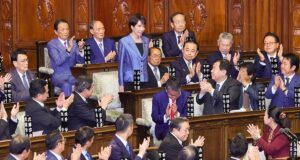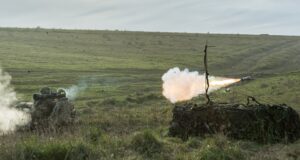By Leo Gardner
4 July, 2025
Introduction
The Russian Orthodox Church (ROC) has been a vital cog in the Russian state from its inception, in particular in its role in shaping foreign outlook and Russia’s purpose in the world. This has been heavily seized upon by President Vladimir Putin who is now using the ROC’s history and conservative traditions to reshape the Russian image and mould his own foreign policy.
History
First introduced by the monks Saint Cyril and Saint Methodius, the first embedding of Christianity into Russia was slow. In 988 AD, however, that all changed. The Primary Chronicle, a medieval work on the rise of Kievan Rus – the precursor to the Russian state -, described what is now known as the ‘Great Choice’ of Prince Vladimir (or Volodymyr as he is called in Ukraine), the leader of the Rus. Looking for a uniting force to bind his warring pagan Slavs, he turned to religion as the answer. Faced with four options: Islam, Judaism, Western Christianity and East Christianity, Prince Vladimir, having sent out envoys to investigate the practices of each of the religions, ultimately landed upon Eastern Orthodox Christianity as his preference. Not much later than this the Prince took on the Eastern Church, first baptising himself and later performing mass baptisms of Slavic people in the Dnieper River.
There followed a gradual integration of the religion into society and more formally into politics throughout the rest of Russian history. The impact of this was felt not just on a national level in helping to develop an identity for the Russian people, but also took that forward into the wider world, shaping Russia’s place more generally on the world stage. The importance and impact of the Orthodox church was reinforced in particular during the two centuries of Mongol occupation starting in the 13th century. Traditions and rites within the church continued and became a bedrock for many communities as they looked for light during the dark times of occupation, helping to secure orthodoxy in the Russian psyche. The fight to remove the Mongols from their occupation at the start of the 16th century was portrayed as the ultimate reconciliation against foreign ‘infidels’ cementing Russia, and in particular Moscow, as a bastion of Christian Orthodoxy and the frontline for fighting foreign devils seeking to corrupt the Russian state.
Off the back of this the Russians began to resolve themselves as a strongly Orthodox state, and at the same time found for themselves their divine mission as the Christian stronghold of the world. The impact of the Great Schism in 1054 followed by the later collapse of the two holy empires of Rome and Byzantium bolstered this. With these two great holy powers gone, a view emerged in Russia of a vacancy at the head of Christianity across the world, (the Catholic Church was deemed an unacceptable replacement). This led to a view of Moscow as the “Third Rome” — deeming Russia to be the next head of morality and true Christianity across the world. Helping to solidify national reputation and puncture its place on the world map, this viewpoint has stapled the Russian outlook throughout its history. The Tsar himself was viewed as appointed by God and Russia’s place on the global map was regarded as divine. This outlook was carried throughout the reign of the Tsar’s, with Peter the Great bringing the Church under the oversight of the government, and later Alexander I using Russia’s image as the bastion of Christianity to depict the invading Napoleon as the ‘Antichrist’. By the turn of the 20th century Imperial Russia had solidified itself as the largest Orthodox state in the world with approximately 90 million people in the country identifying themselves as Orthodox.
The 1917 Bolshevik Revolution and the subsequent take over of atheist communism, however, brought an end to the long feature of Orthodoxy alongside government. As the communists, led by Lenin, took over and implemented a political system in which a new identity of love of the state trumped love of God, churches, priests and their followers suffered widespread persecution and oppression. By 1922, Lenin ordered the confiscation of valuables from churches across Russia – the priests who looked to protect their churches were shot. Over the following decades Orthodoxy lived a shadow of its former self and while some leaders of the USSR were less harsh than Lenin had been, ultimately state was put before religion.
This only paved the way however, for an even greater return which we see now in the Russian government. For as we fast forward to today, however, it appears another revolution has dawned, but this time, with state and religion walking hand in hand.
The Orthodox Church’s New Dawn
The reintegration of the ROC into Russian society and politics started first under Gorbachev and then Boris Yeltsin, as both leaders looked to rebuild from the devastating collapse and loss of face of the Soviet Union in 1991. But no one else more than incumbent President Vladimir Putin believed in strong binding force of religion, just as Prince Vladimir himself once did. The Russian President has in the past two and a half decades looked to extensively use the ROC as a means to rebuild the Russian image, and reignite a sense of patriotism amongst his citizens which was lost at the end of the godless years of communism. In doing so he has arguably now reestablished a ‘Third Rome’ viewpoint in his eyes. His church now encompasses strict conservative viewpoints and sets itself, crucially, in opposition to, as he views it, the Satanic Liberal West. The view of Russia as God’s home on earth has, indeed, in particular been turbocharged in the last few years as Putin has looked to present what he ultimately sees as a war with the West in Ukraine as his modern day crusade.
Russian Image
Setting up the Russian image before taking it forward into the international stage has been crucial for Vladimir Putin’s plan to reestablish Russia as a global power and echos the first rise of Orthodoxy in the region. In particular, the President has made a clear bid to promote himself as the personal figurehead of orthodox religion both in order to sure up his own political position while simultaneously justifying his blatant acts of imperialism. Putin made his own personal connection to the Orthodox religion early into his role as President in 2000, when he spoke publicly about his religion which he said first came down from his great-grandparents and was passed later by his mother, under secrecy during communist rule, onto him. He has also been seen in multiple photographs wearing a silver cross, which he claims to have round his neck at all times. A picture in particular showed Putin celebrating the Epiphany in 2018 wearing this cross while immersing himself in an icy lake during the annual ritual imitation of the baptism of Christ in the River Jordan. Putin has in this way looked to set the defining example for his people to emulate of the connection between a true Russian patriot – as he sees himself – and Orthodoxy. He has also spoken more explicitly of the ‘unique role’ he believes the ROC has in Russia both politically and culturally – saying elsewhere that ‘the moral foundations of our culture… [are] based on Christian values’.
Words and actions by the ROC, headed by Patriarch Krill, whom the late Pope Francis labelled as ‘Putin’s Altar Boy’, have been a direct reflection of the president’s politicisation of the ROC. Kirill has been crucial in the promotion of the conservative themes which Vladimir Putin has to have at the centre of his ‘Third Rome’. This has included in particular the Patriarch viscerally criticising LGBTQ+ rights on multiple occasions, ‘painting them as antithetical to Russian spirituality and morality’ . These attacks have come under the wider veil of rebukes of liberal values in Europe. Regarding the EU in particular, he has said he regards it as “hostile to Christianity” and has accused Western leaders of waging a ‘“war against the traditional family” in promoting gender reassignment, same-sex-cohabitation and other moral perversions”’.
The ROC in the Ukraine War
These attacks on the West have come under the wider development, crucially under Putin’s guise, of the ‘Russkiy Mir’ – the belief in Russia’s unique cultural and spiritual identity which permeates across borders and entitles them to the lands of Belarus and Ukraine. With Russian orthodoxy now a critical part, as Putin would have it, of cultural identity, the Kremlin has exploited the ROC into playing a vital role in proliferating the ‘Russkiy Mir’ concept and hence justifying his invasion of Ukraine. The Ukraine Orthodox Church had attempted to distance itself in any way from the ROC way before the 2022 invasion, splitting from the Russian sector of the Church back in 2018. But while this may have been recognised in Ukraine, this was far from the case for Vladimir Putin, who saw perhaps in that move a further reason for looking to reunite Ukraine with its alleged ‘Motherland’.
Indeed, building upon the ‘Russian image’ Putin has crafted through his aggressive politicisation of the ROC and the creation of Russia as the moral bastion of Christian values in opposition to the satanic West, the President has attempted to mould his invasion of Ukraine, in his mind at least, into the Holy Wars of Russia’s past. Much like the expelling of the Mongols or even more pertinently, tsar Alexander I’s depiction of Napoleon, Patriarch Kirill has labelled the West as the ‘Antichrist’, turning the war in Ukraine from simply a power hungry land-grab, to a cosmic duty the Russians must fulfil. Despite rather limp calls for peace by Patriarch Kirill at the start of the war, the Orthodox Church is now helping to promote the conflict as Putin would like it seen, as Russia’s divine obligation. This was seen most overtly in the production of a new prayer, the “Prayer for Holy Rus” which included lines asking God “to help [Russian people and grant [Russian] victory’ calling those they are fighting against “eager to divide and destroy her one people”. This is nothing new — prayers for Russian victory emerged also in 2014 at the time of Russia’s annexation of Crimea. In another demonstration in the current fight, also, of the influence of the Orthodox Church it has been noted that ‘inflatable churches’ are being taken around the battlefield, equipped for soldiers to pray alongside their military duties as they carry out their mighty crusade.
Conclusion
Vladimir Putin’s reintegration of Orthodoxy into the political and social sphere in Russia has a very similar feel to it as Prince Vladimir’s Great Choice just over a millennium ago as he has looked to rally his people under a unified Russian image, which sees him ultimately playing God. With his ability to turn Patriarch Kirill on a penny and influence Orthodoxy teaching across Russia at his will, Putin is hijacking the Orthodox, placing himself as the ultimate ‘moral’ figurehead. In making himself, as opposed to the Patriarch or God himself, the face of religion, Putin not only solidifies his continued necessity as President for the Russian people but also for the world, as he asks his people for the ultimate sacrifice to defend God and country in the war against the West and against Satanism.
Image: Kirill with Volodin, Medvedev, Lavrov, Shoigu and other prominent figures of the Putin regime during Putin’s Presidential Address to the Federal Assembly on 21 February 2023 (Source: Kremin.ru via CC BY 4.0)
 Human Security Centre Human Rights and International Security Research
Human Security Centre Human Rights and International Security Research




